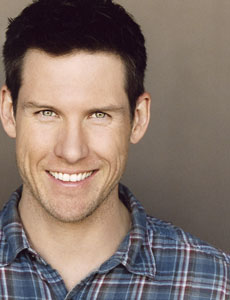 Written by Jamison Haase, L.A. On-Camera Training Center
Written by Jamison Haase, L.A. On-Camera Training Center
Read Part 1 of The 4 Principles to Captivating On-Camera Work
As an actor, I’m sure you watch a lot of film and television. But have you really thought about what elements are used to create the performances you love? Of course there’s talent and hard work, but what technical elements did those actors employ to make the greatest impact possible?
Over the course of the next several weeks, we’re going to distinguish and discuss the four principles to creating amazing on-camera performances, and give you real advice and tips that you can use in your auditions now. Three of these principles you are probably already highly trained in, especially if you worked in theater. But it’s the fourth that makes all the difference in on-camera work. It’s the fourth that most actors never learn. And it’s the fourth that can make or break any film or television audition.
2. Emotional Availability and Vulnerability
The second principle needed for a captivating on-camera performance is Emotional Availability and Vulnerability.
- You need stakes
In our last discussion, we talked about how if an actor is Actively Listening, they will begin to have real genuine emotions; but it’s their Emotional Availability and Vulnerability that will carry those emotions through. As an actor, you must be able to emotionally go where the scene needs to go. If in the scene your character is desperate, then you need to call upon your Emotional Availability and Vulnerability to bring as much desperation as possible to that performance.
- You are human
Your Emotional Availability and Vulnerability is what makes you human. Think of Anthony Hopkins’ performance in Silence of the Lambs; was Hannibal Lector an emotionally vulnerable person, the kind of person who might have the same hopes and fears as you or I? Of course not, he’s a serial killer! He kills and eats people for fun! He wasn’t “human” and that’s what made him so scary. It’s our Emotional Availability and Vulnerability that keeps us human, which brings me to my next point.
- The audience will identify with you
You’re heard the saying before, “It’s more interesting to struggle NOT to cry than to actually cry.” There’s a reason that the saying is true. You’re trying to keep a brave face, trying to hold it together when… BAM! Suddenly the emotions get the best of you and you’re fighting back sobs. The audience will identify with your struggle and find themselves much more emotionally affected. It’s the Emotional Availability and Vulnerability that the audience identifies with — their hearts go out to you, and now you got ‘em!
What can you do to be as Emotionally Available and Vulnerable as possible? WORK. Stretch your range and work on roles and scenes that are outside your comfort level. Work on giving yourself easy access to those emotions so that you can bring them up on a whim. Truly feel the feelings – don’t push them, or show them to us. Be present.
Next time? We’ll discuss Seamless Acting.
Jamison Haase opened L.A On-Camera Training Center in 2007. At LAOTC Jamison and the rest of the staff teach a simple, hands-on approach at acting for the camera developed by working actors directors and producers, geared specifically towards the audition. Would like more information about classes? Find several ways to connect with us, including our newsletters here: http://about.me/laoncamera.




